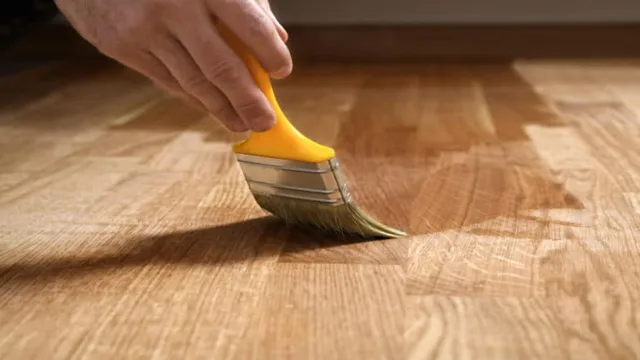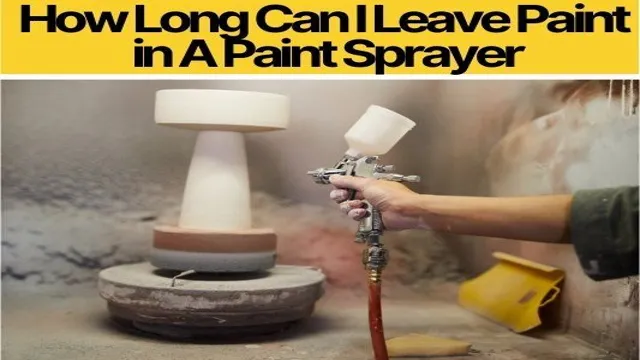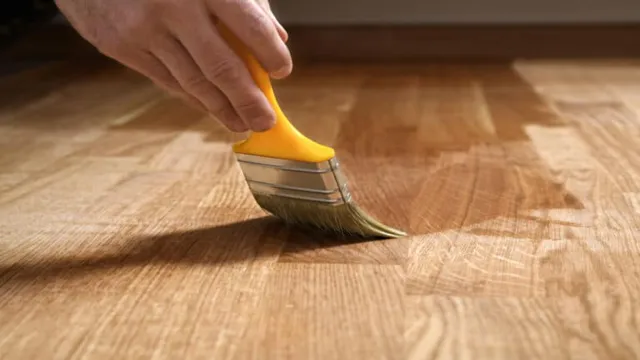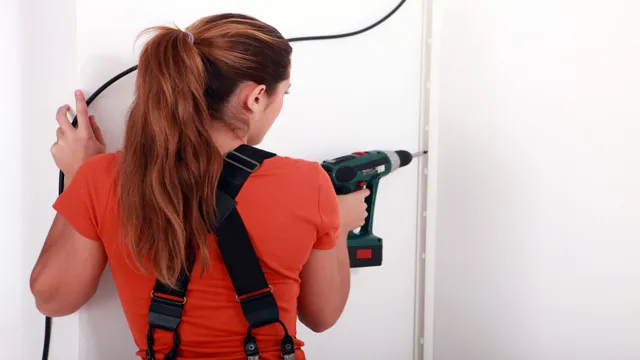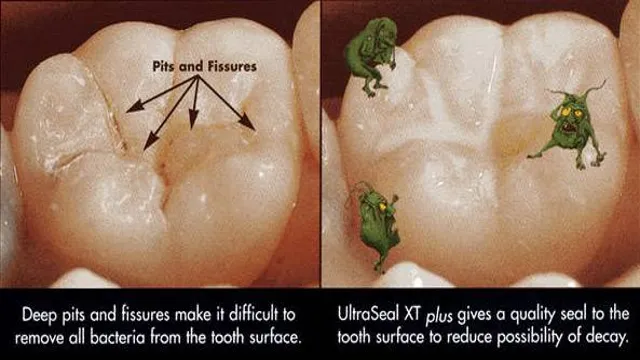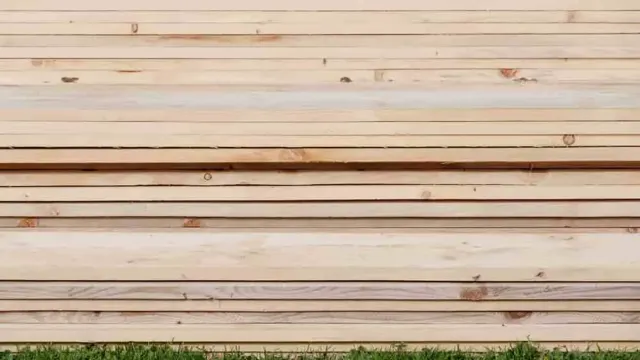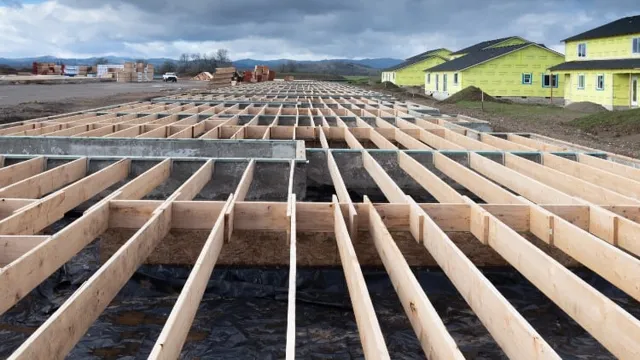How to Repair Loose Drywall Tape on Textured Ceiling: A Comprehensive Guide

Do you have loose drywall tape on your textured ceiling? It can be a real eyesore, distracting you every time you enter the room. Luckily, repairing loose drywall tape is a simple fix with some basic tools and a little bit of know-how. In this blog post, we’ll walk you through the steps to repair loose drywall tape on textured ceilings.
So grab your tools and let’s get to work!
Assessing the Damage
Loose drywall tape on a textured ceiling can be unsightly, but repairing it is a relatively easy process. First, assess the damage by inspecting the area around the loose tape for any other signs of damage, such as cracks or holes. Then, use a putty knife to gently scrape away any loose or protruding pieces of tape and apply joint compound to the exposed area.
Once the joint compound has dried, lightly sand the area and apply another layer of joint compound to create a smooth surface. This process may need to be repeated several times until the surface is completely smooth. Finally, texture the repaired area to match the surrounding ceiling using a textured roller or brush.
With some patience and attention to detail, anyone can repair loose drywall tape on a textured ceiling and make it look as good as new.
Inspect the Damaged Area
When it comes to assessing the damage in a damaged area, the first step is to inspect the area thoroughly. This involves taking a closer look at the extent of the damage and identifying the areas that need repair. Depending on the type of damage, this process can vary.
For instance, in the case of water damage, it is essential to pinpoint the source of the leak and stop further damage from occurring. Similarly, for fire damage, it is necessary to assess not just the affected area but also the smoke and soot damage, which can be hidden and lead to health hazards. It’s also important to note the type of damage and the materials that need to be repaired.
This will help you determine the resources required for repair, including the time and cost involved. By assessing the damage, you will not only be able to identify the scope of the problem, but also figure out if it is worth repairing or if it requires a complete overhaul. If you’re unsure of how to go about assessing the damage, it is best to seek the help of a professional who has experience with damage inspection.

Determine the Cause of Damage
Assessing the damage is an integral part of determining the cause of it. This involves a thorough inspection of the affected area, taking note of any visible signs of damage and documenting them. In some cases, the damage may be conspicuous, making it easy to identify the cause, while in others, it may be less obvious and require further investigation.
For instance, in the case of a building collapse, a trained engineer may be required to investigate the cause as it may not be easy to identify at first glance. It is also important to note that a thorough assessment of the damage may reveal multiple causes, making it crucial to address them all to prevent further damage. By determining the cause of the damage, proper steps can be taken to repair and prevent similar outcomes in the future.
Removing the Old Tape
If you’re dealing with loose drywall tape on a textured ceiling, your first step will be removing the old tape. This can be done using a putty knife and a utility knife. Gently pry up the loose ends of the tape with the putty knife, then use the utility knife to cut away any remaining sections that won’t budge.
Be careful not to damage the drywall or surrounding area as you work. Once you’ve removed all the loose tape, you’ll need to smooth out the surface and create a clean edge for the new tape to adhere to. Sand the area lightly with a sanding sponge or drywall sandpaper, and wipe away any dust or debris.
With the old tape removed, you’re now ready to move on to the next step in your repair project.
Prepare the Area for Repair
Before you begin repairing a damaged area of drywall, it’s important to properly prepare the area. One of the first steps is to remove the old tape. This is especially important if the tape is peeling or bubbling, as it can cause the patching material to also peel or bubble over time.
To remove the old tape, use a putty knife to gently lift up the edges of the tape. Then, use a utility knife to carefully cut along the edges of the tape, being sure not to cut into the drywall itself. Once the tape has been removed, use a sanding block to smooth out any rough spots or residue left behind.
This will help ensure a smooth and seamless repair job. Remember, proper preparation is key to a successful drywall repair project.
Score and Remove the Old Tape
If you want to remove old tape from any surface, it’s essential to start by scoring it first. Scoring involves creating small cuts into the tape, which allows any cleaning agent, such as soap or rubbing alcohol, to penetrate beneath the tape’s surface and dissolve the adhesive. You can score the tape with a sharp object, like a razor, but be careful not to damage the underlying surface.
Once you’ve scored the tape, apply the cleaning agent directly on top and allow it to seep underneath for a few minutes. Afterward, use a scraper or putty knife to gently lift and remove the tape. Keep in mind; older tape may need more time to dissolve, so patience is key.
Once you’ve successfully removed the old tape, clean the surface thoroughly with water and soap or another cleaning agent and let it dry before applying any new tape. With these simple steps, removing old tape can be a breeze and leave you with a clean, fresh surface.
Clean the Area
When it comes to removing old tape, it’s important to start by cleaning the area. You don’t want any dirt or debris getting in the way, as it can cause the new tape to lift or not adhere properly. Begin by wiping the area down with a damp cloth or paper towel.
If there’s any residue left behind, use a mild cleaner and a clean cloth to gently remove it. Be sure to let the area dry completely before proceeding. This may seem like an extra step, but taking the time to clean the area properly will ensure that the new tape stays in place and looks its best.
Applying New Tape
Repairing loose drywall tape on a textured ceiling can be a frustrating task, but applying new tape is a simple solution. The first step is to remove any loose or damaged tape by cutting it away with a utility knife. Next, use a putty knife to apply joint compound to the area where the tape was removed.
Once the joint compound is dry, sand it smooth with a sanding block. Now it’s time to apply new tape. Cut the tape to the needed length, then use a putty knife to apply a thin layer of joint compound to the area where the new tape will be placed.
Carefully lay the tape over the joint compound and use the putty knife to smooth it down and remove any air bubbles. Once the joint compound is dry, apply a second layer and feather the edges of the tape to blend it with the surrounding texture. Finally, sand the area smooth and apply a coat of paint to match the rest of the ceiling.
With a little patience and attention to detail, your textured ceiling will look as good as new in no time!
Choose the Right Tape
When it comes to securing items with tape, it’s important to choose the right one for the job. Whether you’re packing boxes or hanging up decorations, using the right tape can prevent items from falling or getting damaged in transit. Once you’ve chosen the right tape for the job, it’s important to apply it correctly for the best results.
Start by cleaning the surface where the tape will be applied and removing any debris or dust. Then, apply the tape firmly and evenly, pressing down to ensure a strong hold. If you need to remove the tape later, be sure to do so carefully to avoid damaging the surface.
With the right tape and application technique, you can trust that your items will stay secure and protected. So, next time you reach for a roll of tape, be sure to choose the right one and apply it with care for the best results.
Apply Joint Compound
When it comes to applying joint compound to new tape, it’s important to follow a few key steps for best results. First, make sure your tape is firmly in place and any excess mud or debris is removed. Then, using a taping knife, scoop out a small amount of joint compound and spread it over the tape, making sure to cover it completely without leaving any gaps or air bubbles.
Smooth out any bumps or ridges using a clean trowel or drywall knife, working from the center of the tape toward the edges. Finally, allow the joint compound to dry completely before sanding it down and applying additional coats as needed. Remember, taking your time and being precise in your application will result in a smoother finish and a more polished final product.
Apply the New Tape
After removing the old tape, it’s time to apply the new one. Before starting, make sure the surface is clean and dry. If there is any debris or moisture, it can affect the tape’s grip.
Once you have confirmed that the surface is clean, carefully align the tape to the area you want to cover. Apply pressure while guiding the tape along the surface, making sure there are no air bubbles trapped underneath. The key to getting tight, long-lasting adhesion is to ensure that the tape is firmly attached to the surface, leaving no gaps or bubbles.
By applying new tape properly, you can ensure that your items remain secure and protected for an extended period of time. So, it’s vital to follow these steps to get the best possible outcome.
Finishing the Repair
Now that you have applied the joint compound to the area where the drywall tape was loose, it is time to finish the repair. With a sanding sponge, gently sand the area until it is completely smooth and even. Be careful not to oversand and create a depression or uneven surface.
Once the sanding is complete, wipe away any dust with a damp cloth and allow the area to dry completely before painting or priming. If you are unsure about how to match the texture of the ceiling, a good trick is to use a roller with a thick nap and dab it onto some joint compound before rolling it onto the area. This will create a texture similar to the surrounding ceiling.
With a little patience and attention to detail, your repaired drywall will look as good as new in no time!
Apply Additional Coats of Joint Compound
When it comes to repairing drywall, applying multiple coats of joint compound is essential for achieving a smooth, seamless finish. After the first coat has dried, it’s important to sand it down to ensure the second coat will adhere properly. Then, apply the second coat, making sure to spread it evenly and smoothly with a taping knife.
If necessary, use a slightly wet sponge to feather the edges. For larger repairs, a third coat may be necessary to achieve the desired finish. Remember, patience is key when applying joint compound – take your time and allow each coat to dry completely before moving on to the next.
With a bit of perseverance and attention to detail, you can achieve a professional-quality repair that will leave your walls looking as good as new.
Sand the Area Smooth
Now that you have applied the patch to the damaged area and allowed it to cure, it’s time to make it look seamless with the rest of the wall or surface. The next step is to sand the area smooth. Grab some sandpaper and start sanding the edges of the patch first, making sure that they are leveled with the surrounding surface.
Then, gradually move towards the center of the patch, using gentle, circular motions. Make sure not to sand too hard, as this could cause damage or create uneven areas. Continue sanding until the repaired section is completely smooth to the touch.
Once satisfied, wipe off any dust or debris with a damp cloth and let the area dry completely. When the area is dry, it will be ready to be painted or finished to match the rest of the surface. Remember that taking your time with this step will help ensure a professional and seamless repair.
Apply Texture to Match Ceiling
To finish the repair job and blend the textured patch with the rest of the ceiling, it’s important to apply texture that matches the surrounding area. This may seem like a difficult task, but it can be accomplished with the right technique. First, try to determine the type of texture on the ceiling by examining the surrounding area.
If you can’t tell, you may need to create a sample to compare. Once you have a match, use a trowel or spray gun to apply the texture in light coats. It’s better to add texture slowly and build it up gradually than to apply too much at once.
Remember to let each coat dry completely before adding additional layers. This will help you achieve a seamless repair that blends perfectly with the rest of the ceiling.
Prime and Paint the Area
After sanding and filling the area, it’s time to prime and paint the repaired surface. Before applying primer, ensure that the surface is completely dry and clean. Using a paintbrush or roller, apply a thin coat of primer evenly over the area.
Wait for the primer to dry completely, usually within 24 hours, before painting. Choosing the right paint color that matches the surrounding area is crucial for a seamless finish. Apply the paint with a brush or roller, ensuring that it’s evenly spread out, and wait for it to dry before applying a second coat if necessary.
Make sure to use high-quality paint to ensure durability and a professional finish. A final touch-up on the edges and corners will complete the repair, leaving it looking brand new. Remember, patience is key when it comes to painting, so don’t rush the process.
Conclusion
In conclusion, repairing loose drywall tape on a textured ceiling may seem like a daunting task, but with the right tools and a little creativity, you can make your ceiling look as good as new. Just remember to get the right adhesive, sand and prime the area, and blend the texture seamlessly. And who knows, with these newfound skills, you might just become the go-to person for all of your friends’ ceiling repair needs.
So go forth and conquer that loose tape, and feel empowered knowing that you have the skills to fix any ceiling mishaps that come your way!”
FAQs
What causes drywall tape to become loose on a textured ceiling?
Several factors can contribute to loose drywall tape on a textured ceiling, including temperature changes, water damage, and age of the tape.
Can loose drywall tape on a textured ceiling be repaired without hiring a professional?
Yes, you can repair loose drywall tape on a textured ceiling yourself with the right tools and materials.
What tools and materials are needed to fix loose drywall tape on a textured ceiling?
You will need a putty knife, drywall joint compound, sandpaper, and new drywall tape to fix loose drywall tape on a textured ceiling.
How do I prepare the area before repairing loose drywall tape on a textured ceiling?
First, remove any loose or damaged tape and clean the area thoroughly. Then, apply a coat of joint compound over the exposed drywall.
How do I apply the new drywall tape to the textured ceiling?
Cut the new tape to the appropriate length and fold it in half, adhesive side out. Then, press the tape into the joint compound and smooth out any wrinkles.
How many coats of joint compound should I apply over the new drywall tape?
Apply at least two coats of joint compound over the new drywall tape, allowing each coat to dry completely before applying the next.
How do I smooth out the joint compound after applying it over the new drywall tape?
Use sandpaper to smooth out any bumps or ridges, being careful not to sand too much and damage the tape.

